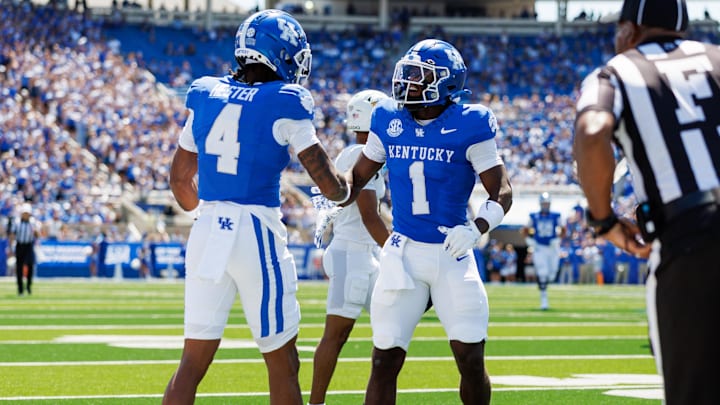Before the season, we analyzed Offensive Coordinator Bush Hamdan's comment about the wide receiver room having "no clear separation," framing it as potentially a great problem to have—a sign of immense depth.
After one game, it's clear that problem isn't great. It's a major concern.
The pessimistic interpretation of Hamdan's comment feared the room lacked a true No. 1 threat who could separate from defenders. After Saturday's performance against Toledo, that fear has become a reality. The performance wasn't just underwhelming; it was atrocious. All those OR's on the depth chart weren't because they were elite, it was because they all were struggling.
From optimism to an alarming reality

The ambiguity of the preseason has given way to an alarming truth. Kentucky’s passing game finished with a paltry 85 yards, and the vast majority of that production came from the tight ends. The players lined up on the outside were largely invisible.
The entire wide receiver room—Ja'Mori Maclin, Fred Farrier II, Hardley Gilmore IV, Troy Stellato, J.J. Hester and others—combined for a shocking 4 catches all for just 12 yards. A unit expected to be a strength was a complete non-factor, failing to create space or make plays downfield.
A deeper look at the anemic production
“We’re really not sure where those guys are at."
— Adam Luckett (@AdamLuckettKSR) August 12, 2025
“There’s probably seven or eight guys you see in practice where the consistency is up and down."
Kentucky flipped the WR room in the offseason. How PT shakes out this year is still unknown.
➡️https://t.co/dADxQSY0Sj pic.twitter.com/R9tt5Ph7WS
This isn't a new problem, but it appears to be getting worse. Last season, the Wildcats failed to produce a receiver who eclipsed the 725-yard mark. Now, after losing their top two receivers from that team, Dane Key and Barion Brown, to the Transfer Portal, the hole they left behind looks like a canyon. For context, Key had 6 catches for 51 yards and a touchdown in his Nebraska debut, while Brown had 5 catches for LSU—both individually had more production than UK's entire WR room combined.
More is needed from this group of talented but largely unproven players. The inability to stretch the field or win one-on-one matchups puts immense pressure on the rest of the offense and will not be sustainable against SEC defenses.
Drew Holbrook is an avid Kentucky fan who has been covering the Cats for over 10 years. In his free time, he spends time with his family, and watching Premier League soccer. #UpTheAlbion
